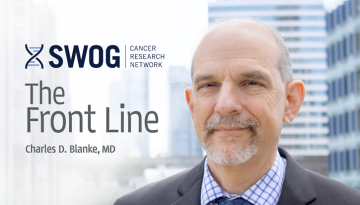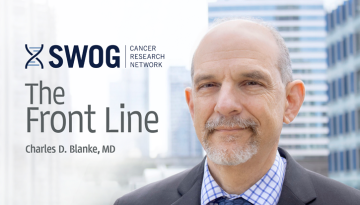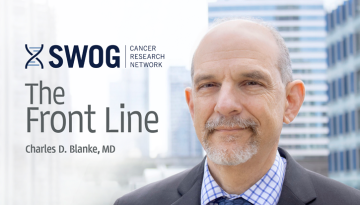Young Investigator Training Course Has Impact
Today is the application deadline for admission to the 25th edition of SWOG’s Young Investigator Training Course. Sponsored by The Hope Foundation for Cancer Research, this is our flagship program for early career researchers.
I’ve previously written about how graduates of the program frequently become the next generation of scientific stars at SWOG. Now we have additional examples.
For example, both of the oral presentations that will be given on SWOG trial results at the ASCO annual meeting next month started as projects incubated in the Young Investigators Training Course—Neeraj Agarwal (class of 2009) presents results of his S1216 prostate cancer trial and Ken Grossmann (class of 2013) presents his melanoma study S1404.
The statistics on YITC graduates are impressive: chairs or co-chairs of 80 activated studies, highly enriched representation among SWOG leadership—including as committee chairs, co-chairs, and executive officers—and first authors or co-authors on hundreds of important publications.
But SWOG’s primary goal is to significantly improve lives, so the ultimate measure of the success of our work is its impact on patients. I am specifically talking about results that have changed practice, established milestones, or set new standards of care in their specialty.
I detail a few of these key findings below. This list is by no means complete, but it gives a sense of how rich the return has been, for both SWOG and our patients, on our investment in training early career researchers:
- Syma Iqbal, who completed the course in 2000, the first year it was offered, chaired S0413, which found that among patients with advanced or metastatic gastric cancer, those with higher HER2 levels had increased overall survival when treated with lapatinib, offering solid evidence that targeted therapy works in a tumor.
- Rita Mehta, alumna of the 2001 course, led S0226, which established that women with metastatic hormone-positive breast cancer have longer event-free and overall survival when treated with the combination of anastrozole plus fulvestrant than when treated with anastrozole alone.
- Jeff Smerage completed the course in 2004 and chaired study S0500, which confirmed the prognostic significance of the level of circulating tumor cells in the bloodstream of patients with metastatic breast cancer receiving first-line therapy.
- Lynn Henry graduated from the 2006 YITC and went on to lead S1202, which found that duloxetine could ease the significant joint pain thousands of women experience from aromatase inhibitors they take after they’ve had surgery for early stage breast cancer.
- Daniel Persky, class of 2007, was study chair of S1001, which changed the standard of care for early stage diffuse large B-cell lymphoma by confirming that most patients who have a PET scan that shows them free of disease can safely skip radiation treatment.
- Amir Goldkorn, a 2008 alumnus, was a co-chair of S0421 and lead author in validating the prognostic utility of counting circulating tumor cells as a potential metric for guiding therapy in patients with metastatic castration resistant prostate cancer.
- Brian Till completed the course in 2009 and served as study chair of S0601, which improved outcomes in patients with newly diagnosed mantle cell lymphoma by combining standard R-CHOP therapy with bortezomib and following this with maintenance bortezomib, instilling prolonged remissions in a subset of patients.
- Kevin Kalinsky, a member of the 2010 cohort, applied what he learned in the course to leading S1007, the RxPONDER trial, which last December reported that postmenopausal women with HER2-negative breast cancer involving one to three lymph nodes and whose results on a common genetic test indicate they are at low risk for recurrence can safely skip chemotherapy.
- Monty Pal, class of 2011, used his time in the course to develop what would become S1500, a trial that reported out earlier this year, establishing cabozantinib as the new standard of care treatment for metastatic papillary kidney cancer, a treatment that significantly extends median progression-free survival times for these patients.
I could list more, but you get the idea: it’s work with significant impact on human lives.
We’re now planning exactly when and where to hold this year’s course. And very soon reviewers will be examining the batch of applications submitted. We have to wonder what practice-changing trials are brewing in those applications and how they will improve the lives of our patients down the road.
Other Recent Stories



